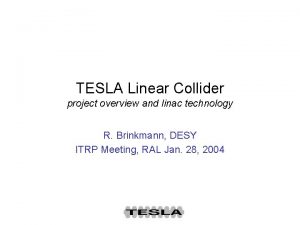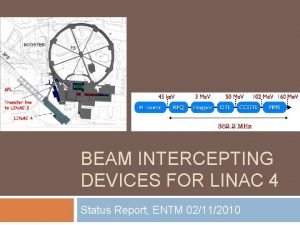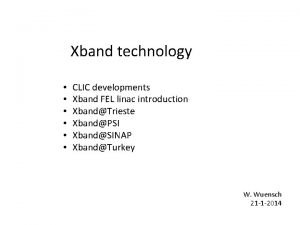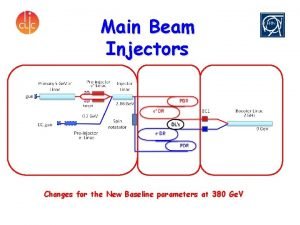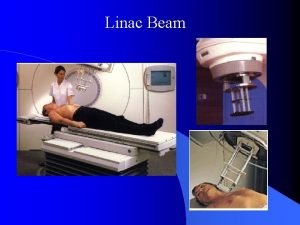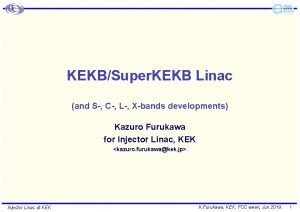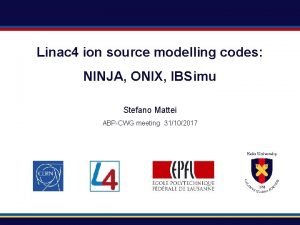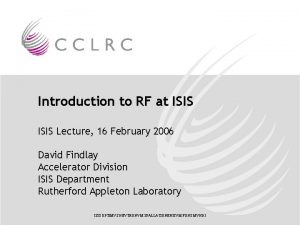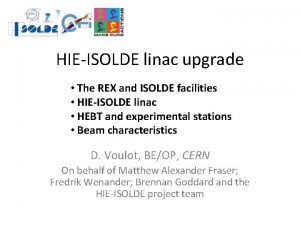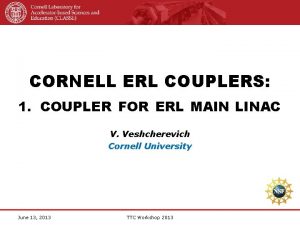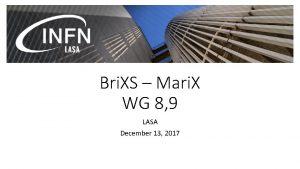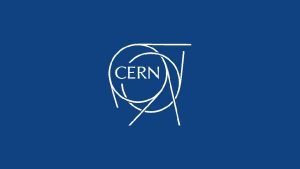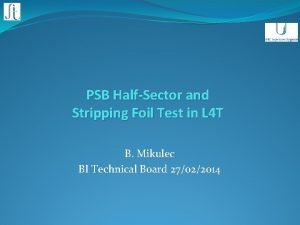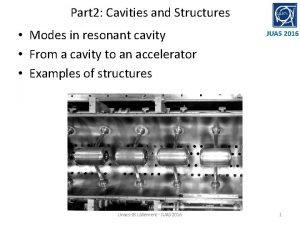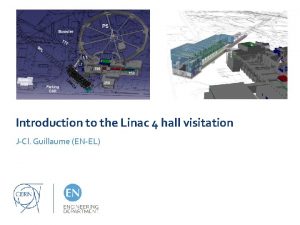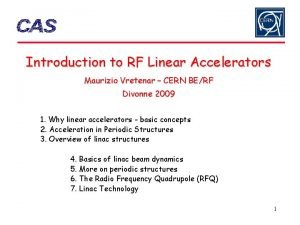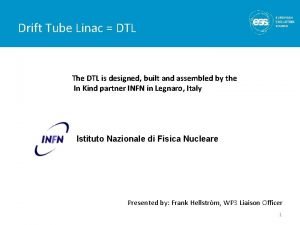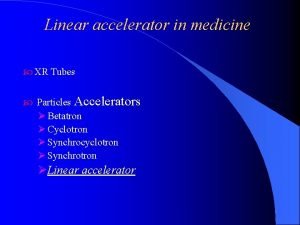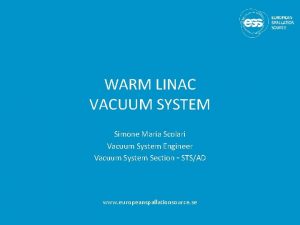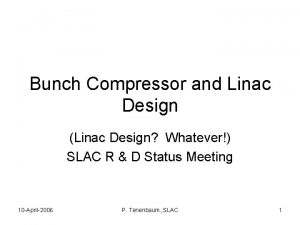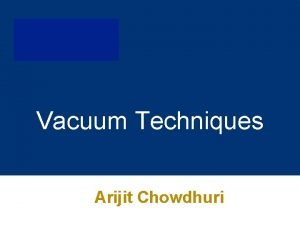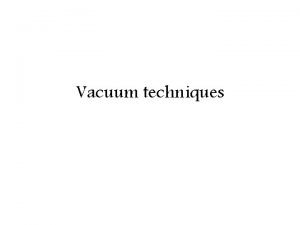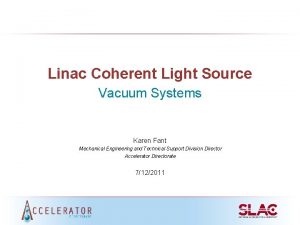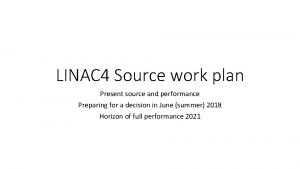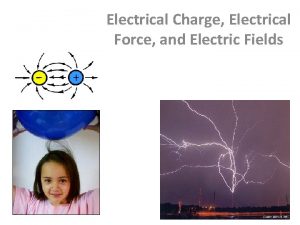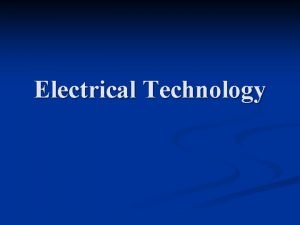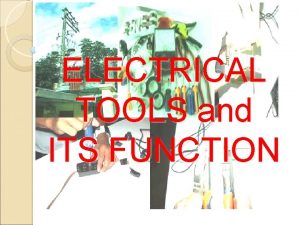Linac 4 source vacuum design Electrical network vacuum

















- Slides: 17

Linac 4 source vacuum design Electrical network – vacuum analogy for Linac 4 source vacuum design C. Pasquino, P. Chiggiato VSC – Section seminar ongoing activities- 30 th September 2011

Outline �Dynamic vacuum design: Electrical Network Analogy; �Conductance of a vacuum component; �Linac 4 source new lay-out analysis: volumes design and simulations; �Linac 4 source pressure profiles & RFQ pressure profiles; �High efficiency H 2 pumping: material development VSC – Section seminar ongoing activities- 30 th September 2011

Dynamic vacuum analysis: electrical network – vacuum analogy A vacuum line can be analyzed as an electrical network: by means of dedicated programs ( LTSPICE, PSPICE…) the dynamic vacuum profile of complex components is evaluated. in VACUUM ELECTRICAL NETWORK Volume Capacitance Conductance Resistance Flow Current Pressure Voltage out VSC – Section seminar ongoing activities- 30 th September 2011

Conductance & transmission probabilities For simple components (orifices, short ducts…), the conductance is evaluated through simple analytical formula. For complex components ( i. e. extraction chamber, ignition chamber…) the conductance is calculated via the transmission probability: a Monte Carlo simulation, run with Molflow*, allows its evaluation. Ø, A L ü T temperature; ü R gas constant; ü Mm molecular mass; ü Area of the entrance; ü α transmission probability; * Simulation program written by R. Kersevan VSC – Section seminar ongoing activities- 30 th September 2011

Linac 4 source vacuum design Linac 4 characteristics: • future 160 Me. V H- Injector (2015); • High Flow H 2 injection via a piezovalve; • Once the H- are produced in the plasma chamber, they are extracted at 45 Ke. V. Injection line & plasma ignition TMP 1000 l/s H 2 Extraction chambers VSC – Section seminar ongoing activities- 30 th September 2011

Linac 4 source vacuum design LEBT: Low Energy Beam Transfer TMP 400 l/s H 2 RFQ : Radio Frequency Quadrupole • In the LEBT the ion beam is filtered, focused analyzed; • Due to space charge compensation, H 2 is injected at 1 e-5 mbar in the LEBT tank; • The RFQ accelerates the beam from 45 ke. V to 3 Me. V. Frontal Section SIP 360 l/s VSC – Section seminar ongoing activities- 30 th September 2011

Volume design In order to evaluate the transmission probability of a vacuum component, we need to design its inner volume: Component of the ignition line Second volume of the extraction chamber VSC – Section seminar ongoing activities- 30 th September 2011

Transmission probabilities & Molflow: first volume extraction chamber VSC – Section seminar ongoing activities- 30 th September 2011

Equivalent Electrical Network: Input data Pulse Characteristics H 2 Flow 5 e-3 mbar l/pulse Pulse 5 e-4 s Frequency 2 Hz Degassing Data ( no bake-out) H 20 Flow 2 e-10 Torr l s-1 cm-2 Pump Characteristics TMPextr H 2 = 1000 l/s; TMPLEBT H 2 = 400 l/s STARCELL IPRFQ H 2 = 360 l/s VSC – Section seminar ongoing activities- 30 th September 2011

Equivalent Electrical Network Injection + ignition line Extraction region LEBT – Low Energy Beam Transfer VSC – Section seminar ongoing activities- 30 th September 2011 RFQ

Pressure Profiles in time VSC – Section seminar ongoing activities- 30 th September 2011

Pressure Profiles in time VSC – Section seminar ongoing activities- 30 th September 2011

Pressure profile along the RFQ VSC – Section seminar ongoing activities- 30 th September 2011

Pressure & pumping speed Comparison of the maximum pressure reached in the LEBT tank during a pulse as a function of the TMP pumping speed DN 160 DN 200 DN 250 VSC – Section seminar ongoing activities- 30 th September 2011

High efficiency H 2 pumping materials Idea: develop ‘sandwiches’ of materials with specific characteristics with respect to H 2 pumping & UHV compatible (low dissociation pressures); V H 2 For example: ü Pd_Ag cracks H 2 molecules into atoms at the surface, high stability to O 2 BUT high dissociation pressure; ü V, Nb have a high H 2 diffusivity at room temperature; ü Zr has a low plateau pressure: its tendency to create Hydrides leads it to be a perfect ‘reservoir’ for H 2. VSC – Section seminar ongoing activities- 30 th September 2011 Pd-Ag Zr

High efficiency H 2 pumping materials status � Diffusion Profiles & pressure drift in time have been simulated so far for different materials (Pd_Ag, V, Zr, Nb); � Different kind of samples have been produced and tested ( Pd_Ag-V-Zr; Pd_Ag-Nb); � Partial (Pd_Ag-Zr pumping at 200 ˚C) or no results (Pd_Ag –V-Zr; Pd_Ag-Nb) yet; � Next test: Pd_Ag – NEG; � WORK IN PROGRESS. VSC – Section seminar ongoing activities- 30 th September 2011

Conclusions ü The Linac 4 source and the RFQ have been fully designed from the dynamic vacuum point of view; ü Lt. Spice & Molflow allow a precise vacuum analysis of complex vacuum lines; ü The development of high efficiency H 2 pumping material is a work in progress, and will be investigated within next months. VSC – Section seminar ongoing activities- 30 th September 2011
